When seeding a new lawn, it is usually recommended to use a thin layer of straw mulch to cover the new grass seeds. Covering the grass seeds and soil helps retain moisture and prevents the fresh grass from drying out. A layer of straws also ensures that new grass seeds stay in their place and do not get relocated by wind and water. Let’s discuss more about straw cover for grass seed.
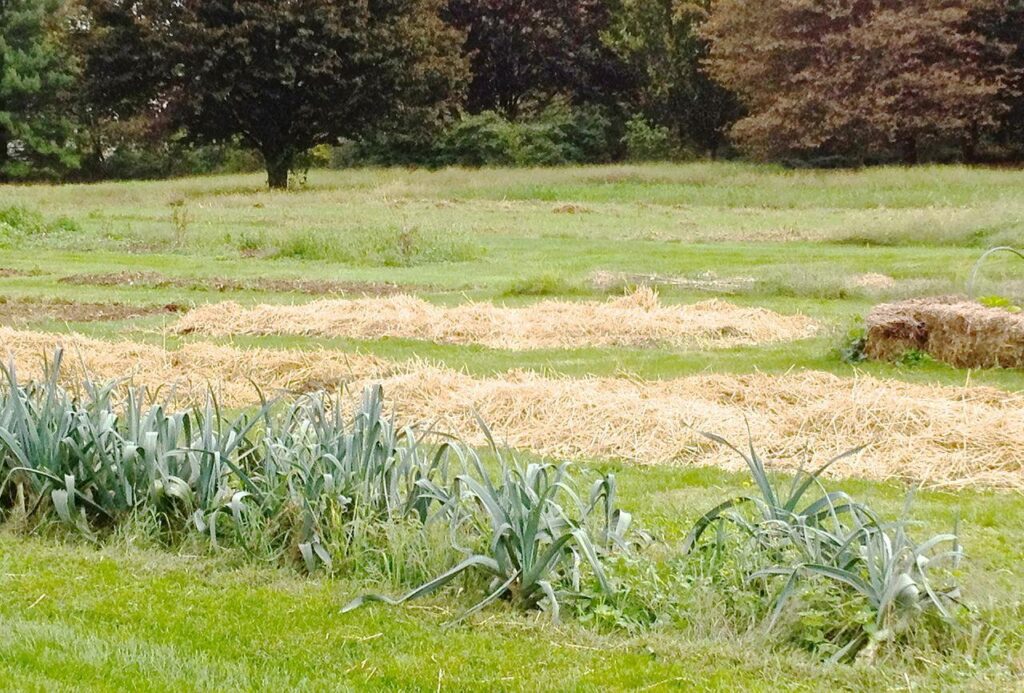
In a new lawn, a thin layer of straw mulch can help with the process of seed germination.
The practice is not as necessary when seeding or overseeding older lawns. This is because the already planted grass in old lawns on its own can help hold the moisture and the new seeds in place. However, covering the grass seeds in newly seeded lawns could give the new grass seedlings a considerable head start.
In this article, we will discuss the pros and cons of covering grass seed in new lawns. How much straw do you need, how to do it appropriately, and the best straw alternatives that you can use to cover new grass seeds. Happy reading!
Why do you need to cover the seeds?
Grass seeds covered with straw have a much higher germination rate than the uncovered grass. To ensure that grass seeds germinate in the new lawn, you will have to take a number of measures in addition to the initial watering. The most important thing is to ensure that the seeds stay in place before germination. To encourage germination, the grass seeds also need to be in good contact with the soil.
If the grass seed cannot make good contact with the soil, it will not be able to develop a normal root system. Also, a proper cover is needed so that the young roots do not immediately dry off. A layer of appropriate mulching material will keep the young roots covered and ensure good seed-to-soil contact by putting pressure on the grass seeds.
See also: How to Plant Bermuda Grass | Bermuda Grass Growth Stages and Care
Pros of covering a newly seeded lawn

Photo Credit Straw mulching is also used in crop fields for healthy plant growth.
Until established, newly seeded grass will die if it dries. Also, young roots are sometimes not strong enough to hold the grass in its place on its own. Adding a straw mulch could increase the soil’s water retaining capacity and provide the new seedlings with some additional support. Here are a few pros of covering a newly seeded lawn with straws:
- As already stated, placing straw mulch over the ground will reduce the rate of evaporation. It will make sure that the young grass and its roots do not dry out and will save you from the trouble of watering your lawn too frequently.
- Another advantage of covering with straw is that it prevents seeds from moving around. If seeds are just lying bare on the ground, there is an increased chance that blowing wind will move around quite a few seeds. The seeds can also move when you apply water to the ground and may congregate in one place. This could ultimately result in the formation of a patchy turf. A straw cover could hold the seeds in place, preventing them from unnecessarily moving around.
- A straw cover can also slow down the process of soil erosion. It will lock the soil particles in place, significantly reducing the lawn maintenance tasks. A straw cover will also keep your lawn fertile by reducing soil erosion as the uppermost layer of the soil is usually the richest in nutrients.
- If seeds are lying uncovered on the surface of the ground, there is a high chance that birds will feed upon them. By covering the new seeds, you can discourage bird activity in your lawn, ensuring that you get a thick turf later on.
- After use, removing straw is a simple task. In fact, sometimes, you might not even need to remove the straw as it degrades and disintegrates rapidly, adding nutrients back to the soil.
Cons of covering a newly seeded lawn
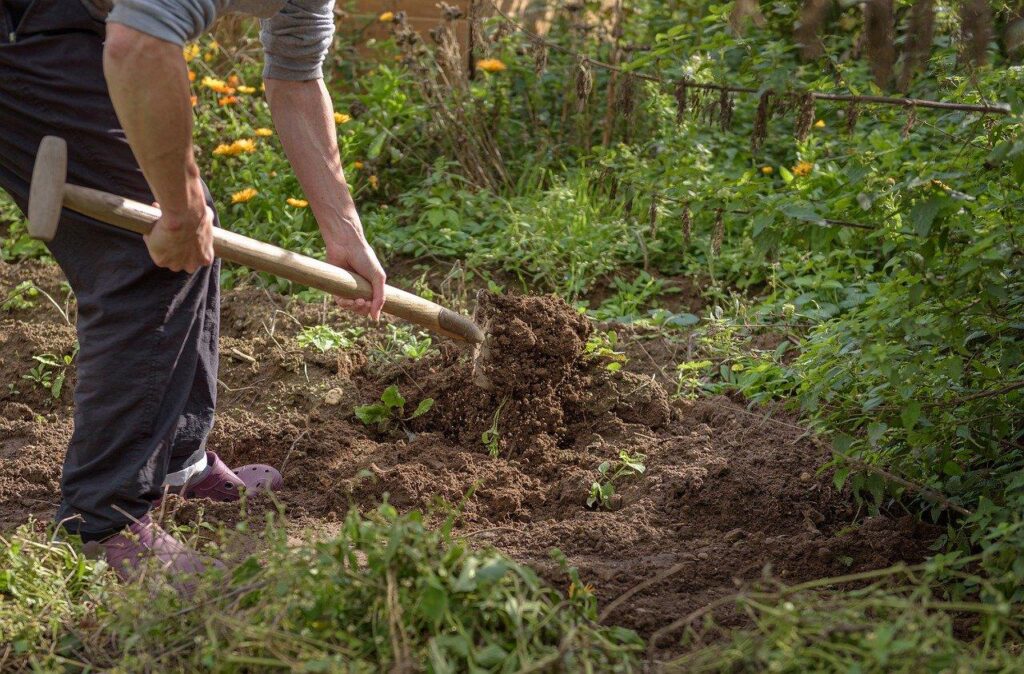
Applying a thick straw cover can prevent the sunlight from reaching the soil.
Just as there are benefits of using straw as a cover for a new lawn, there are some downfalls too. Unfortunately, sometimes these downfalls can heavily outweigh the pros of using a straw cover. Therefore, make sure you read this guide thoroughly so that you have a better idea of whether or not you should cover new seeds with a straw cover.
- Straw is often confused with hay which comes with seed heads attached; hay could introduce unwanted plants or weeds in your lawn.
- Germination of grass seedlings may not occur if you use a thick straw cover in your lawn.
- Straw can blow around in unwanted places with the wind, making your lawn and surrounding areas look messy.
- While removing the straw after germination, there is a high chance that you might also damage the newly germinated seedlings.
How to apply a straw cover on a newly seeded lawn?
- Prepare the soil and make sure it is well aerated as the new seedlings will need all the air they can get during the first few stages of their growth.
- Sprinkle the seeds evenly all over the soil to avoid the formation of a patchy turf.
- After that, place the straws on top. One bale of straw should be sufficient for around a thousand square feet.
- Make sure the straw cover is not too thick, or it will prevent light from reaching the ground and interfere with the air exchange.
- Water the lawn and wait for your seeds to germinate.
Straw mulch alternative
Straw is used extensively as a mulching material because of its easy availability, affordability, and ease of application. In addition, straw is preferred over other mulching materials because it has a lower seed content. The absence of seeds means that there will be no competition for soil nutrients during the process of grass seed germination.
However, depending on the soil of your newly seeded lawn or the weather conditions of your area, you might have to choose some other material as a mulch. Here are some materials that you can use as a mulch on your newly seeded lawn:
Peat Moss

Often used as a starter fertilizer, peat moss can also be used for mulching newly seeded lawns.
Even though peat moss is commonly used as fertilizer to add nutrients to the soil, it can also be used as a mulch. Peat is an accumulation of organic matter or partially decayed vegetation. It naturally occurs in cold and marshy environments. Gardeners and lawn owners often use peat moss to manage soil pH.
Peat moss has excellent water holding capacity, which helps slow water evaporation from the ground. Unlike straw, it is also sterile and will not contaminate your lawn with weed seeds, saving you from the trouble of weed control.
However, before putting it into the ground, you need to ensure that it is sufficiently loosened. Applying peat moss in its natural fibrous and thick state can starve your lawn of moisture. It can suck up all the moisture from the soil in its thick form, leaving your grass dry.
Aged Pine Straw
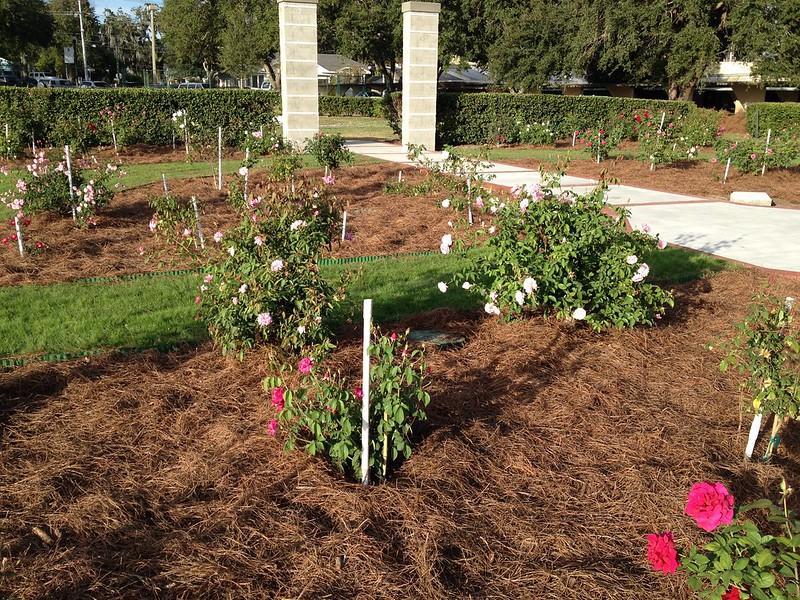
Pine straw is another excellent alternative to straw mulch.
Pine straw mulch is made from the pine needles that the pine trees naturally drop. Like straw, pine mulch can help prevent moisture loss, soil erosion, and sudden extreme temperature changes. In addition, it is relatively easy to use, and it decreases soil compaction to promote healthy root growth.
Compared to other types of mulches, pine mulch can also reduce the need for weed control. This is because it has a lower tendency to import weed seeds. Also, pine straws do not wash away like other mulches, which helps keep the lawn clean and minimizes the lawn maintenance needs as well.
However, using pine straw as a mulch is debated among gardeners and lawn owners. This is because the pine needles contain terpenes, compounds that can inhibit seed germination. So, if you are thinking of using pine straw as a mulch, make sure the needles are well-aged. In old needles, most of the terpenes would have already evaporated away.
Compost
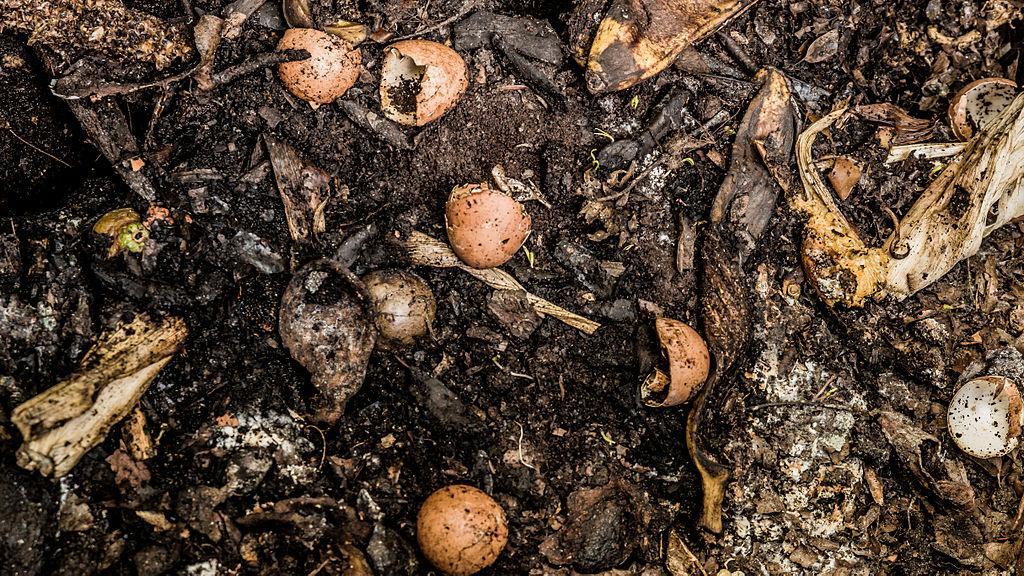
Using partially decomposed compost could introduce weeds and attract birds to your lawn.
Compost will make an ideal mulch if you are planting a new lawn in under-fertilized soil. Using compost as a mulch in garden soil comes with the additional benefit of free nutrients. In addition, the organic matter in compost quickly disintegrates and constantly keeps leaching into the soil below. Using compost as a mulch will also reduce the development of patchy areas in your lawn.
However, make sure you only use well-aged compost in your lawn. A partially decomposed compost could have plant scarps in it that could attract birds. Also another downside of using compost as mulch is the introduction of weeds. Many weeds have seeds that can survive for an extended period in an inactive state.
Nonetheless, compost makes an excellent mulch. It is simple and easy to use. Just apply a few centimeters thick layer of compost after seeding the soil, and you are good to go.
Sawdust
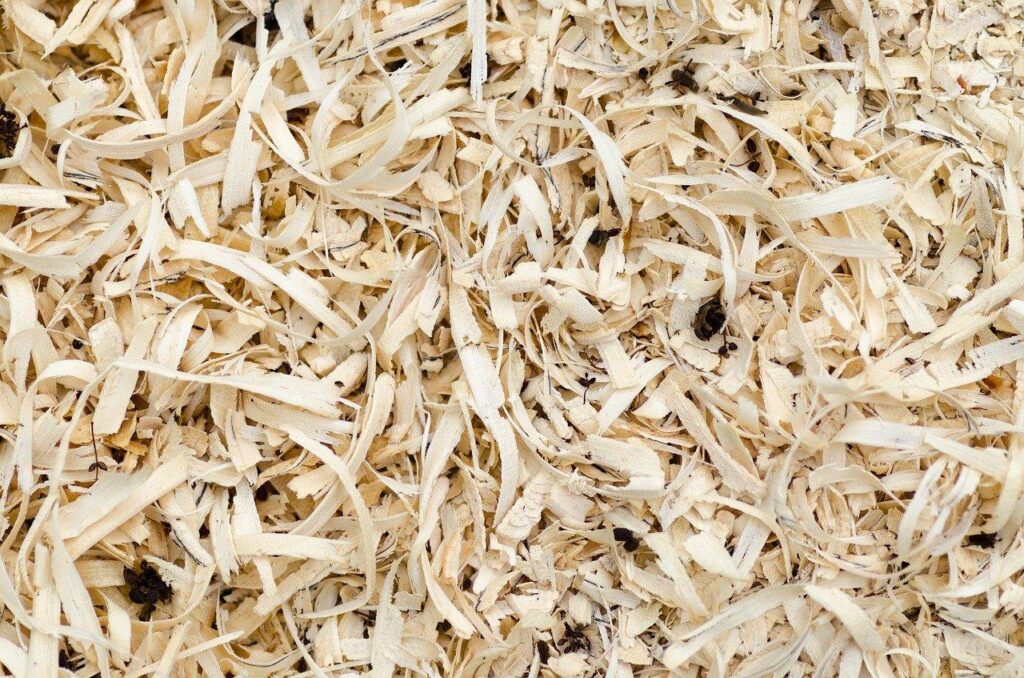
Be careful in using sawdust as mulch; it can make thick mats on the soil, preventing sunlight and evaporation.
Sawdust is another excellent alternative to straw as a mulch. In addition to its benefits as a mulch, several other benefits are obtained when plowed in soil. By plowing sawdust into the soil, heavy soils become lighter and light soils get a boost in their water holding capacity.
Sawdust mulch is often used in fruit fields to prevent the fruits from getting dirty when they fall onto the ground. Moreover, sawdust is exceptional for plants that grow in acidic soil because of its acidic nature. It can also help prevent weeds from spreading all over your garden.
However, do not apply a thick layer of sawdust to the soil. It tends to make mats when moist and can prevent the light from reaching the bottom. This will also reduce the rate of evaporation from the soil, resulting in damage to the grass seedlings.
Frequently Asked Questions (FAQs)
How much straw should you use?
Newly seeded grass does not need as much coverage as freshly planted shrubs or trees. For the best grass growth, ensure that the layer of the straw that you put on the newly seeded lawn is not thicker than two to three inches. This will ensure that maximum sunlight and air reach the germinating seeds.
Also, a layer this thick will prevent the seeds from moving around with the wind and prevent soil erosion as well. Usually, a bale of straw is sufficient for approximately a thousand square feet. Applying more straw could prevent sunlight from reaching soil and lock the moisture inside, resulting in the death of grass germinating inside.
How long to leave straw on grass seed?
When the grass has reached the initial mowing length or about 3 inches in length, it is time for you to remove the straw cover from the soil. This happens typically within three to six weeks, depending on the weather conditions, nature of the soil, and the availability of nutrients.
However, while removing the straw, make sure that you do not damage the newly germinated grass. Some plants might still have not developed a robust root system to hold them in place completely.
What is the best thing to cover grass seed with?
Choosing the best material to use as a mulch depends on several things, including soil type, weather conditions, and the type of grass you want to plant. For instance, sawdust is acidic and is best for the situations when you want to plant grass that grows best in acidic soil.
Sources for Further Reading
- Choosing and applying mulches – Gardening Solutions – Institute of Food and Agricultural Sciences, University of Florida. (2022). Retrieved 12 April 2022, from https://gardeningsolutions.ifas.ufl.edu/care/planting/mulch.html
- Types of Mulch. Retrieved 12 April 2022, from https://sonomamg.ucanr.edu/Mulch_A-Z/Types_of_Mulch/
- Adding and removing straw mulch. (2022). Retrieved 12 April 2022, from https://extension.umn.edu/strawberry-farming/adding-and-removing-straw-mulch-strawberries
After reading this straw cover for grass seed article, please also check out our other articles:
Is Sand Good For Lawns? (and What Type of Sand for Lawns Is Best)
Common Lawn Weeds With Yellow Flowers (And How To Get Rid Of Them?)
Garden Weeds With Pink Flowers (And How To Get Rid Of Them?)







